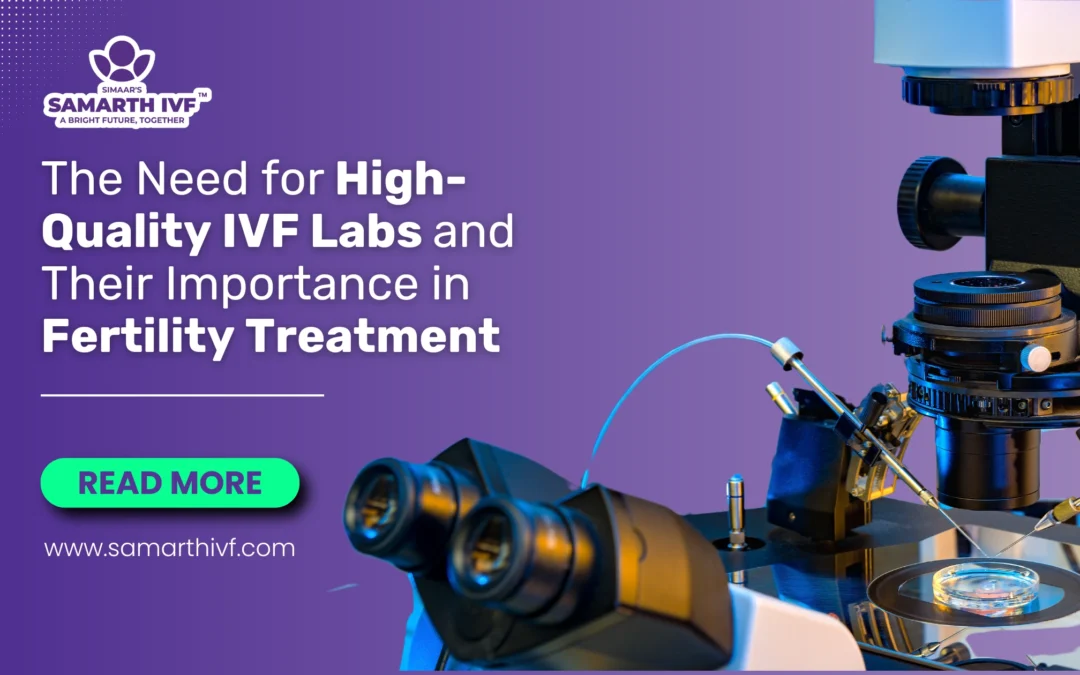In Vitro Fertilisation (IVF) has become a ray of hope for many couples struggling with infertility. While advancements in technology and medical research have significantly increased success rates, the heart of any fertility clinic is its IVF laboratory. A well-designed, high-quality IVF lab is not merely a space where procedures happen—it’s the foundation upon which successful outcomes are built.
The role of an IVF lab is crucial because this is where the most delicate processes—gamete manipulation, fertilisation, and embryo culture—are carried out. Any minor fluctuation in environmental conditions, lab design, or equipment functionality can have profound effects on the outcomes. Therefore, ensuring that an IVF lab is set up with meticulous attention to detail is critical in maximising success rates and delivering the best possible care to patients
Why Quality IVF Labs Matter

Precision in Fertility Treatment:
IVF is a process that demands absolute precision. Every step, from gamete collection to embryo culture, requires a controlled environment with state-of-the-art equipment and highly trained professionals. A well-equipped lab minimises the risks of contamination, sample mix-ups, or environmental fluctuations that could affect the viability of gametes or embryos.
Enhanced Success Rates:
The right lab setup with the appropriate technology and quality control mechanisms in place directly influences success rates. Factors like air quality, temperature control, and the accuracy of equipment can significantly impact embryo development. The more controlled and optimised the lab environment, the better the chances of achieving a successful pregnancy.
Patient Trust and Satisfaction:
Fertility treatments can be emotionally, physically, and financially taxing. When patients step into a clinic, they are entrusting their future to the lab’s care. A well-designed, efficient, and high-quality IVF lab not only improves outcomes but also fosters trust and confidence in the clinic’s ability to deliver top-notch care.
With the importance of a good IVF lab established, let’s dive into how to set up a lab that meets the highest standards.
Setting Up the Ideal IVF Laboratory: A Comprehensive Guide
1. Location and Layout: The Foundation of Success Location:
The location of the IVF lab plays a pivotal role in maintaining a contamination-free environment. The lab should be situated in a quiet, low-traffic area to avoid unnecessary vibrations and pollutants. Areas near railway tracks, petrol pumps, or environments with high VOCs (Volatile Organic Compounds) should be avoided, as these can affect the delicate processes happening inside the lab. Similarly, the lab should not be placed on the same floor as septic operating theatres or other medical facilities that produce fumes or contaminants.
Layout and Design:
The design of an IVF lab requires efficient space utilisation. An ideal lab should allocate between 500 and 1,000 square feet for lab operations, including spaces for sperm collection, changing rooms, and the embryo transfer room. To enhance functionality, the lab should be divided into zones:
- Preparation Area: For handling consumables and equipment.
- Clean Area: For performing procedures like oocyte retrieval, fertilisation, and embryo culture.
- Cryopreservation Area: Specifically for freezing and storing gametes and embryos.

To maintain optimal working conditions, the lab must be equipped with a high-efficiency particulate air (HEPA) filtration system to keep the air clean. Positive air pressure should be used to prevent contamination from outside sources. Regular monitoring of air quality, temperature (maintained between 20-24°C), and humidity (kept at 35-50%) ensures a safe and stable environment for embryo culture.
2. Essential IVF Lab Equipment
The right equipment is the backbone of any IVF laboratory. A variety of advanced tools are needed to ensure precise control over all stages of the IVF process.
Core Equipment:
- Laminar Flow Hood: Provides a sterile environment for crucial procedures like sperm preparation and embryo culture.
- Incubators: Essential for maintaining embryos in optimal conditions. Both CO₂ incubators (for pH regulation) and tri-gas incubators (for precise oxygen and CO₂ control) are recommended, with a minimum of two incubators required.
- Microscopes: A stereomicroscope is needed for sperm preparation and oocyte identification, while an inverted microscope is necessary for ICSI (Intracytoplasmic Sperm Injection) and embryo assessment.
- Micromanipulators: Used for the precise handling of gametes during ICSI.
- Centrifuges: Critical for sperm preparation.
- Cryopreservation Equipment: Includes controlled-rate freezers and liquid nitrogen storage tanks for the freezing and storage of gametes and embryos.
Additional equipment like gas analyzers, air quality monitoring systems, and optional witnessing systems (for tracking samples) further enhance lab safety and operational efficiency.
3. Consumables and Culture Media
The success of IVF procedures heavily depends on the quality of consumables and culture media used:
- Culture Media: Using certified, high-quality media is vital for the different stages of IVF, including oocyte retrieval, fertilisation, and embryo culture.
- Sterile Consumables: Single-use, sterile petri dishes, tubes, pipettes, and needles help to prevent cross-contamination.
4. Standard Operating Procedures (SOPs)
Every IVF lab must establish clear Standard Operating Procedures (SOPs) to standardise lab activities and maintain consistency:

- Semen Collection and Processing: SOPs for semen analysis and sperm preparation.
- Oocyte Retrieval and Handling: Well-defined methods for oocyte retrieval, grading, and culture.
- ICSI and Embryo Assessment: Specific procedures for ICSI and embryo evaluation.
- Cryopreservation: Standardised freezing and thawing protocols to ensure sample viability.
Regular quality control checks on pH levels, temperature, and incubator conditions are also critical to maintaining a sterile, controlled environment.
5. Personnel and Training
The success of an IVF lab is contingent not only on equipment but also on the expertise of the personnel:
- Lab Director: A qualified embryologist with extensive experience in managing IVF labs.
- Clinical Embryologists and Lab Technicians: Specialised staff trained in handling gametes, embryos, and equipment.
Continuous education and certification ensure that staff remain updated on the latest technologies and techniques, fostering a culture of constant improvement and innovation.
6. Safety and Regulatory Compliance
Adhering to safety protocols is essential for maintaining lab integrity:
- Biological and Chemical Safety: Ensure proper handling of biological samples and hazardous materials.
- Regulatory Compliance: IVF labs must meet both local and international ART (Assisted Reproductive Technology) standards and secure necessary certifications from relevant bodies like HFEA or ASRM.
7. Maintenance, Calibration, and Emergency Preparedness
Regular maintenance and calibration of equipment, particularly incubators and micromanipulators, ensure accuracy in lab procedures. Backup power systems, such as UPS and generators, are vital in case of emergencies. Having a disaster recovery plan is essential to prevent sample loss or equipment failure during critical moments.
8. Continuous Improvement
To stay at the forefront of fertility care, IVF labs should commit to regular data analysis, integrating new technologies, and maintaining open channels for patient feedback. Research and development should always be ongoing, adapting new advancements into everyday practice.
The Future of Fertility Care Begins in the Lab
An IVF lab is not just a sterile workspace; it is the engine that drives fertility success. By carefully planning every aspect of the lab—from its layout and equipment to personnel training and quality control—clinics can provide the highest standard of care to their patients. A well-run lab, equipped with cutting-edge tools and skilled professionals, maximises the chances of successful IVF outcomes and provides patients with the hope and possibility of starting their families.


